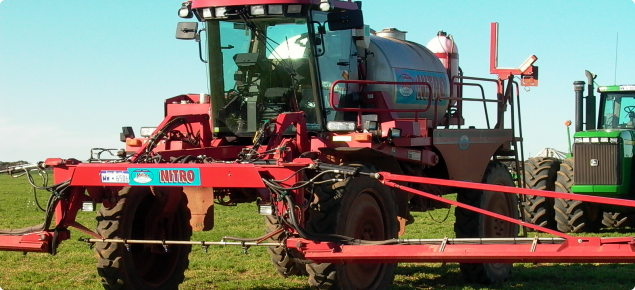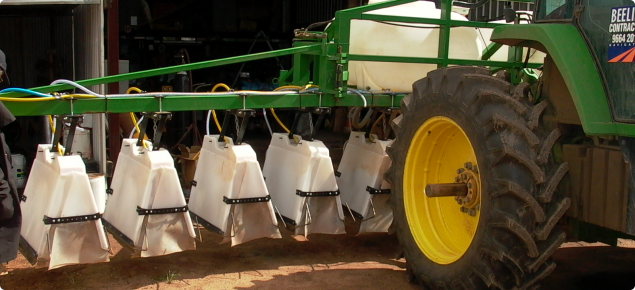Controlling stressed weeds
When a weed has been subjected to stress it will not be adequately controlled by herbicide rates sufficient for unstressed weeds, even when there has been sufficient rainfall to make the weed appear healthy. Additives such as ammonium sulphate, wetters and oils can help improve the control of stressed weeds by 10-20%, but can also be unpredictable. Performance enhancements are specific to some herbicides or formulations, so always check the label.
Stressed weeds are harder to kill than healthy, actively-growing weeds. Plants can be stressed and not show any distinct visual signs. Stress can be caused by:
- lack of moisture, for example, dry conditions, physical or chemical impediments to root growth
- lack of oxygen due to waterlogging
- extremes of temperature, for example, cold (frost) and heat
- nutrient deficiencies
- insect pests, for example aphids and wireworms
- disease
- a sublethal dose of herbicide from previous applications or residues
- mechanical damage, that is, tillage or slashing.
Moisture stress, that is, drought conditions, is one of the most common plant stresses. Translocation and respiration slow dramatically when plants are moisture stressed, restricting the movement of herbicides to their sites of action. When herbicides are applied to stressed crops and pastures, herbicide breakdown via metabolic processes (within the plant) can be slowed, leading to crop or pasture damage.
Plants growing under dry conditions may also have a layer of dirt and dust on their leaves that can create a physical barrier to penetration by herbicides.
Weeds that have suffered moisture stress may have limited leaf development but extensive root systems developed to assist in the search for moisture. This means the above-ground plant biomass does not adequately reflect the true weed size or growth stage.
Plants experiencing high temperatures, low humidity and low soil moisture conditions (for example, plants growing following a summer rainfall) tend to have a thicker cuticle (the protective cover of the leaf) with more waxy deposits on the surface. This change in leaf structure, reduces absorption of foliar-applied herbicides.
The timing and amount of rainfall not only determines the moisture status of the plant but also removes dust from the leaves and modifies the leaf cuticle. Recent rainfall will therefore improve herbicide absorption.
Predicting a dose that will kill stressed weeds is difficult but if in doubt never ‘cut’ rates and consider the use of a double knockdown or a tillage operation as a follow-up.
Seasonal environmental conditions determine overall herbicide performance and conditions on the day of spraying determine the variation around this level. Herbicides perform best when weeds are actively growing. So weather that favours plant growth will also favour herbicide performance.
Cold weather will slow the growth of both crops and weeds. This can mean that the amount of herbicide absorbed and translocated is reduced resulting in less than the required lethal dose reaching the target site. This problem is exacerbated in dry soil where growth will already be limited by an alternative stress.
The ability of the crop (non-target species) to detoxify/metabolise the herbicide into non-harmful compounds may be reduced by cold weather. It is this reduction in the ability to metabolise the herbicide that may result in crop damage. This has been observed in particular with the sulfonyl urea herbicides.
There are numerous herbicides, such as diflufenican and carfentrazone-ethyl, that damage growth of existing crops. New growth is, however, not affected and plants are able to ‘grow away’ from the herbicide damage. In dry cold conditions plant growth is slowed considerably and the crop may not grow out of the damage as readily.
It is necessary to leave 10 days between spraying phenoxies and grass selectives to avoid antagonism. If you have had a series of frosts during this period, growth of both weeds and crops will have slowed. It is worth waiting a few additional days before spraying the grass selective to ensure that the crops and weeds have grown out of the effect of the phenoxy (and vice versa).


